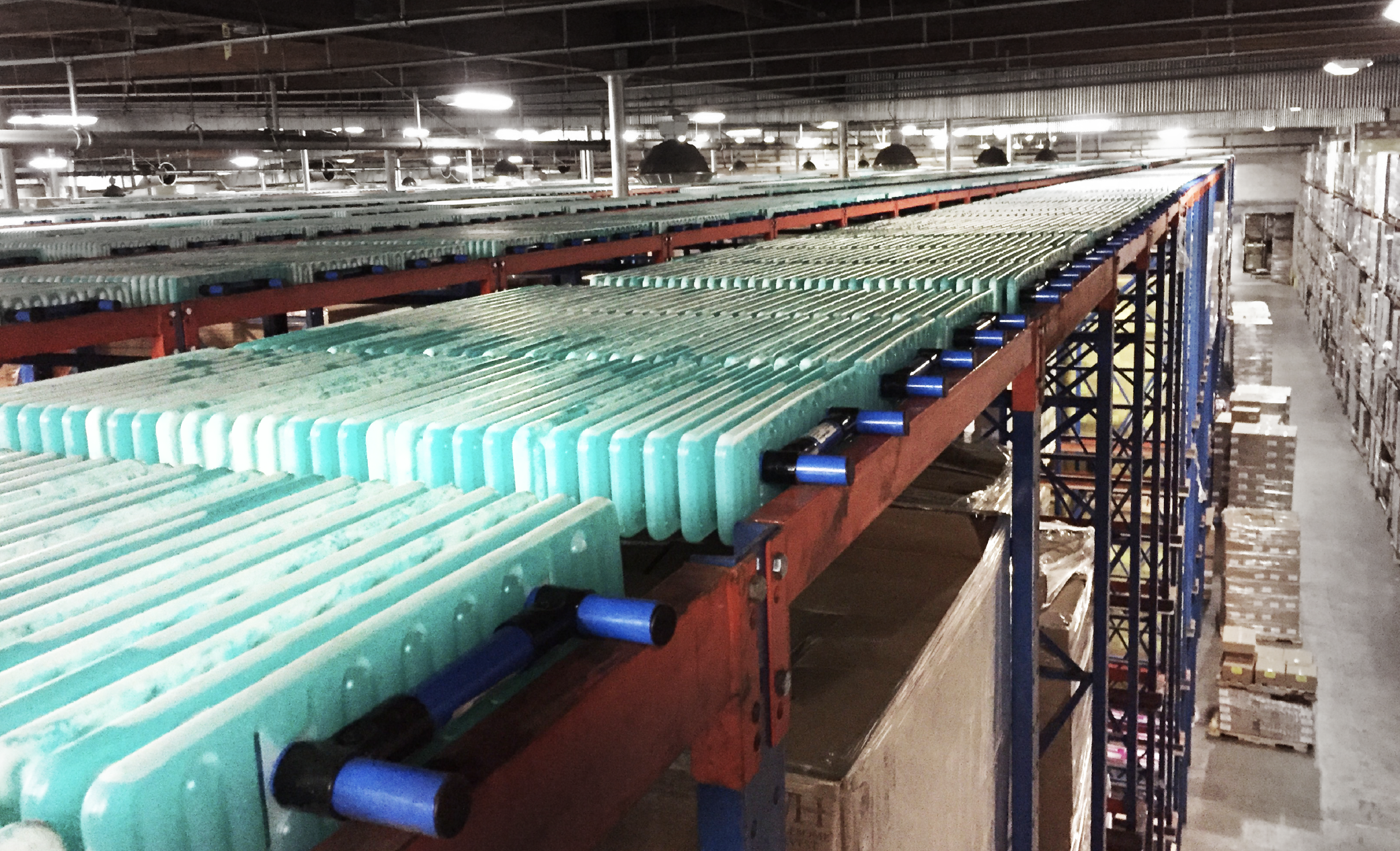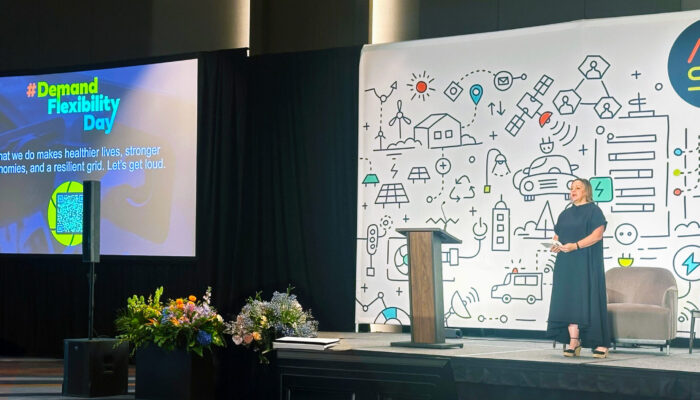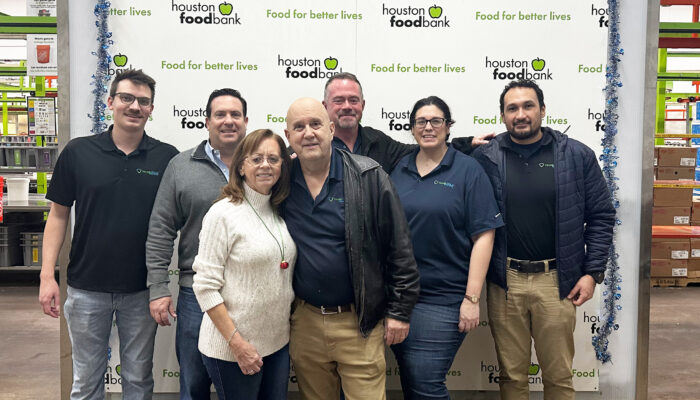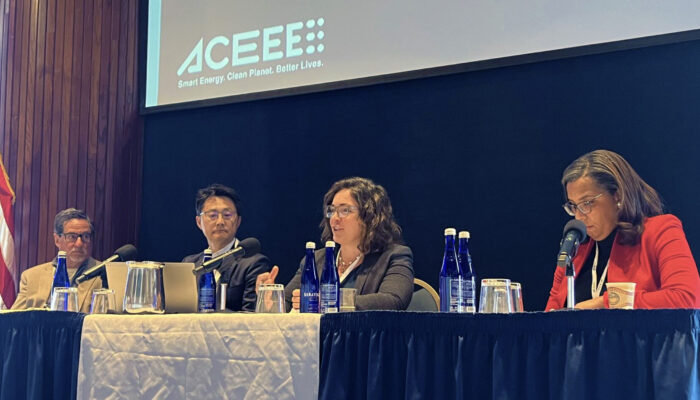
Intelligent Long-Duration Thermal Energy Storage
Viking Cold Solutions™ is a thermal energy management company focused on making the world’s cold storage systems more efficient, flexible, and sustainable while protecting food quality. Our long-duration Thermal Energy Storage (TES) Systems, with a levelized cost of energy (LCOE) less than 2 cents per kWh, have been installed inside frozen food production, storage, and distribution facilities around the world. Viking Cold’s innovative application of environmentally-friendly Phase Change Materials (PCM) and cloud-based intelligent controls and monitoring combines energy storage with efficiency to enable flexible energy management and reduced energy costs.

See How TES Adds Efficiency & Flexibility to Refrigeration
Viking Cold Solutions enables companies to achieve up to a 35% or greater reduction in energy costs through efficiency and energy storage flexibility.
Thermal Energy Storage (TES) leverages phase change material to store energy in the form of cold for future use. It is engineered to freeze/thaw at specific temperatures commonly used in frozen cold storage (-20°F to 32°F or -28°C to 0°C). This allows the refrigeration equipment to be turned off for long periods of time (up to 13 hours) while maintaining stable temperatures in the freezer.
Our TES system works well for new construction, retrofit, or refurbishment projects.
 Viking Cold Solutions Joins Industry Leaders at AESP Flex Connect Panel on Grid Resilience
Viking Cold Solutions Joins Industry Leaders at AESP Flex Connect Panel on Grid Resilience
James Bell and Dr. Crystal Miller, AESP Keynote Speaker and Head of Policy & Government Relations at Tribal Clean Energy At the AESP Flex Connect Conference in Salt Lake City this week, James Bell, President and CEO of Viking Cold Solutions, joined a panel of experts to discuss “Optimizing Refrigeration and Storage for Grid Resilience.” The panel brought together leaders in energy efficiency, demand flexibility, and distributed energy resources to share strategies, lessons learned, and real-world insights that can help both the grid and energy customers. Panelists explored the opportunities and challenges of implementing demand flexibility in sectors such as cold storage and refrigeration – industries with high, continuous energy needs. Discussion topics included identifying the most impactful, immediately achievable improvements; overcoming customer and industry barriers to adoption; and understanding the role of utility pricing and policy in driving change. Each speaker shared perspectives on customer engagement, technology adoption, and what it will take to make demand flexibility more attractive to industrial markets. James’ contribution focused on how Thermal Energy Storage (TES) paired with AI optimization can significantly reduce energy use and peak demand while improving operational reliability. He outlined real-world results showing 20%–35% lower energy consumption, up to 95% reductions in peak demand, and electrical cost savings of up to 50%. He also emphasized how AI’s predictive control and anomaly detection can help facilities act as virtual power plants (VPPs), supporting grid flexibility and renewable integration. Jennifer Szaro, AESP President & CEO The conversation continued with a robust 30-minute Q&A session with a large and highly engaged audience. Most questions centered on the demand flexibility of refrigeration loads, advanced controls, and the role of thermal energy storage in supporting grid resilience. Attendees were also eager to learn how AI can further enhance the management of refrigeration demand, offering predictive insights and enabling more effective participation in grid programs. The panel ended with a forward-looking discussion on the future of AI-driven demand flexibility, the potential for applications beyond refrigeration, and the importance of collaboration between technology providers, utilities, and program designers. The consensus: intelligent, flexible solutions are needed for meeting rising energy needs while building a more resilient and sustainable grid. The informative and impactful three-day 2025 AESP Flex Connect conference closed out on the main stage in Salt Lake City with a keynote address by Dr. Crystal Miller. Dr Miller is the Head of Policy and Government Relations for the Alliance for Tribal Clean Energy, and shared important insights into ways to advance clean energy and energy access for Indian Tribes. Her speech and the Q&A that followed was another great example of how AESP brings people together to solve energy problems through collaboration and business cooperation – a fitting highlight for Demand Flexibility Day 2025!
 Viking Cold Solutions Strengthens Community Bonds with Holiday Volunteer Effort at Houston Food Bank
Viking Cold Solutions Strengthens Community Bonds with Holiday Volunteer Effort at Houston Food Bank
Continuing our tradition of giving back, Viking Cold Solutions volunteered at the Houston Food Bank over the holiday season. The team rolled up their sleeves to tackle a variety of tasks, from building and breaking down boxes to packing essential food items for local pantries. Pallets of goods were transferred to assembly lines, and the kitchen buzzed with activity as a holiday lunch was prepared for those in need. The Houston Food Bank is a solution to both hunger and food waste. Around 1 million people in the 18 southeast Texas counties served by Houston Food Bank are considered food insecure – lacking consistent access to enough nutritious food to fuel a healthy life. To address this challenge, the Houston Food Bank distributes food and other essentials through a network of more than 1,600 community partners. In addition, the food bank provides programs and services aimed at helping families achieve long-term stability which include nutrition education, health management, and help in securing state-funded assistance and other services. At Viking Cold Solutions, we believe in paying forward our good fortune by supporting food banks across the globe with our Thermal Energy Storage technology. This innovative solution reduces energy costs and allows food banks to allocate more resources toward serving their communities. The most recent addition to Viking Cold Solutions food bank portfolio includes Feeding Northeast Florida. We completed a project for Feeding Northeast Florida in December just in time for the holidays and the New Year season. By providing food banks with sustainable technology, Viking Cold Solutions helps organizations like the Houston Food Bank and Feeding Northeast Florida to extend their reach and increase their impact in the fight against hunger.
 Thermal Energy Storage: Shaping the Future of Demand Management & Renewable Energy
Thermal Energy Storage: Shaping the Future of Demand Management & Renewable Energy
Renewable energy has long been synonymous with wind and solar — sources derived from nature’s ability to create energy that emit zero greenhouse gases. Today, Thermal Energy Storage (TES) is emerging as a critical component of the renewable energy landscape, standing alongside wind and solar as part of the solution for a cleaner, more resilient energy future. At this year’s Energy Efficiency Policy Forum, put on by the American Council for an Energy-Efficient Economy (ACEEE), demand response and virtual power plants (VPPs) were key topics of discussion, with Thermal Energy Storage increasingly recognized as a vital component. TES provides a reliable and cost-effective means of storing and releasing energy as cold or heat, helping balance supply and demand. By integrating with distributed energy resources like solar and wind, TES enhances the efficiency and flexibility of VPPs, storing excess renewable energy for later use, reducing grid strain, and improving energy resilience. The ACEEE is a nonprofit focused on advancing energy efficiency to foster economic growth and address climate change which is committed to reducing energy waste, supporting equitable economic opportunities, and improving public health and the environment. This year’s Policy Forum centered on shaping federal energy policies, with discussions on building efficiency, transitioning industries to low-carbon practices, and enhancing electric vehicle and freight systems. The forum aimed to influence policies that strengthen U.S. competitiveness and address climate challenges. Inspired by the discussions at the Energy Efficiency Policy Forum, Viking Cold Solutions leadership team took these learnings to the subsequent Department of Energy’s Deploy 24 Conference. The focus of the DOE conference was on accelerating the deployment of critical energy and decarbonization technologies, such as TES, across the U.S. At both events, Viking Cold engaged with policy makers, utility companies, and developers, exploring the growing opportunities TES offers for increased utilization of renewables. Viking Cold Solutions is ready to partner with our customers and ensure they achieve their sustainability goals. Photos by ACEEE and DOE.


